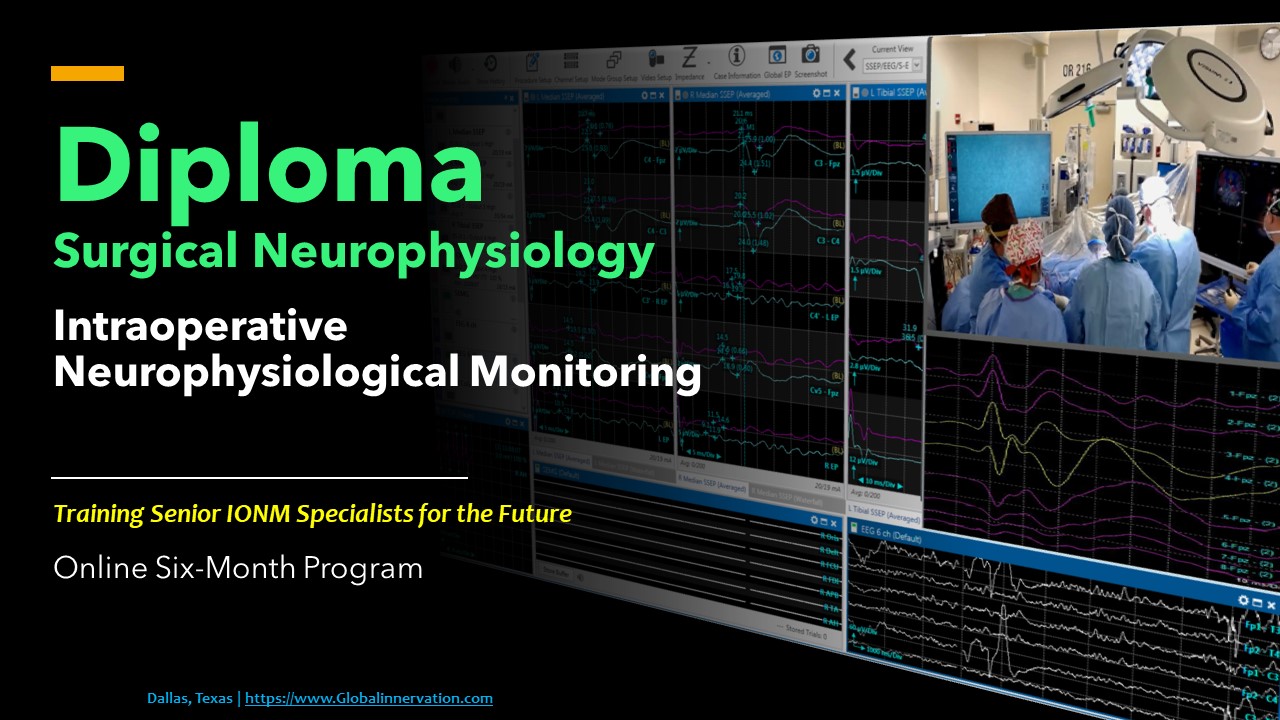Epidural D-Wave Recordings for Intramedullary Spinal Cord Tumors
DOI:
https://doi.org/10.5281/zenodo.10211325Keywords:
D-waves, IONM, MEP, neuromonitoring, motor evoked potentials, intramedullary, spinal cord tumor, epidural recordingAbstract
Direct or D-waves represent the direct activation of the corticospinal tract fibers that are recorded directly from the exposed spinal cord. While not as widely employed as the main intraoperative neuromonitoring motor function modalities such as motor evoked potentials (MEPs) or electromyography (EMG), epidural D-waves can provide just as much benefit to spinal monitoring cases. While MEPs and EMG record from the muscles, D-waves only record from the level of the epidural electrode on the spinal cord. While this may seem limited, D-waves have unique advantages (Figure 1). As a direct recording, the D-waves do not experience the same synaptic delay that MEPs experience at the ventral horn. Thus, there is little to no delay in the feedback of D-waves recordings. As a direct waveform, it requires little to no averaging, so there is less delay than for modalities that do. The single pulse stimulation needed to elicit a D-wave response also has less risk of causing patient movement, unlike MEPs, and thus can be run continuously without worry . This can detect warning changes potentially indicating compromised motor function sooner before it appears in the muscle recordings.
References
Costa, P., Peretta, P., & Faccani, G. (2013). Relevance of intraoperative D wave in spine and spinal cord surgeries. European Spine Journal, 22(4), 840-848.
Deletis V, Sala F. Corticospinal tract monitoring with D- and I-waves from the spinal cord and muscle MEPs from limb muscles. In: Daube JR, Mauguiére F (eds) Handbook of clinical neurophysiology. Volume 8. Intraoperative Monitoring of Neural Function [Volume Editor Nuwer MR].Elsevier, 2008, pp.235-251.
Kothbauer KF, Deletis V, Epstein FJ. Motor-evoked potential monitoring for intramedullary spinal cord tumor surgery: correlation of clinical and neurophysiological data in a series of 100 consecutive procedures. Neurosurg Focus. 1998;4:1–9. doi: 10.3171/foc.1998.4.5.4.
Macdonald DB. Intraoperative motor evoked potential monitoring: overview and update. J Clin Monit Comput. 2006 Oct;20(5):347-77.
Park, H., & Hyun, J. (2015). Intraoperative neurophysiological monitoring in spinal surgery. World Journal of Clinical Cases : WJCC, 3(9), 765-773.
Downloads
Published
How to Cite
Issue
Section
License
Copyright (c) 2023 J of Neurophysiological Monitoring

This work is licensed under a Creative Commons Attribution 4.0 International License.





